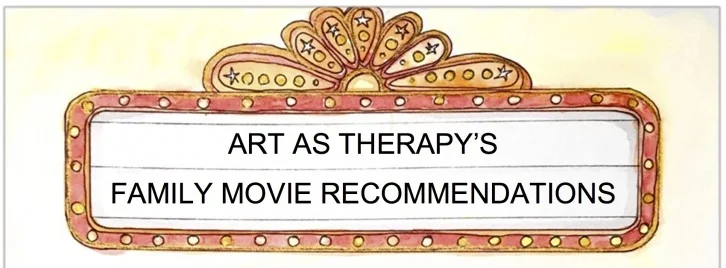In a Ted Talk filmed in July 2009, Chimamanda Adichie, a writer and storyteller, warns about the danger of a single story. She observes that we are impressionable and vulnerable in the face of a story, especially as children. If we only know one story about a place or a person, we see things from our single story and there is no possibility for anything else. When we make one story the only story, it can lead to stereotypes, and the problem with stereotypes is not that they are untrue but that they are incomplete. Single stories rob people of dignity and make it very difficult for us to recognize our shared humanity. They emphasize how we are different rather than how we are the same. Adichie emphasizes that many stories matter, that stories can be used to empower and inspire people and can illuminate the ways that we are similar. She suggests that when we recognize that there is never a single story, we can regain a kind of paradise in this world.
In art therapy, we work with stories. Sometimes people come to art therapy with a single story that seems to be taking control – a story about something that has happened, or about a problem that seems to be taking control. Even from our first meeting, the initial consult, as art therapists we are interested in uncovering multiple stories. For example, if a child is experiencing great difficulty at school, we want to know what they were like as a baby, before school was part of their reality. We want to know what they like to do on weekends, how they interact with their siblings, and what their unique strengths are. We recognize that there is never one story. We agree with Adichie when she says that focusing only on negative aspects flattens our experiences and ignores all of the other stories that form who we are. Art therapy sessions are a safe space where clients can share their stories, and reflect on their own experiences. Even within this process we discover that there are many stories. We are in the business of opening up possibilities and supporting individuals in creatively finding new ways of seeing and interacting with the world.
One great way to engage with different stories is by watching movies. At Art as Therapy we love movies, and we often encourage parents to watch movies with their kids and then talk about them together. Here’s why we recommend this activity:
- Watching movies is a great way to spend time together. Although it may be helpful to use the TV as a distraction for the kids while you get things done around the house, we encourage you to actually sit and watch a movie with your kids every once in a while. This time together has lots of great relationship-building benefits – check out our blog post about reading together, as time spent watching movies can work the same way (http://artastherapy.ca/reading-together-builds-relationships-3-reasons-to-read-to-your-kids-this-summer/).
- Movies are an excellent platform for exposing children to characters, personalities and experiences that extend beyond their everyday experiences. They provide an opportunity to expand children’s emotional awareness and understanding of what goes on in the world. Exposure to many different stories helps to prevent a single story from dominating a child’s worldview.
- The plot in the movie provides a great opportunity to teach children about cause and effect, choices and consequences, and how choices or behaviours impact relationships. Often there is a moral or the protagonist learns a lesson. As a parent or caregiver, you can use the characters and plot of the movie to give a message without it being directed at or directly about the child.
- Discussing movies can be a wonderful way to create space for dialogue and to open up communication in your relationship with your child. Children often relate to the characters in movies, and if you are familiar with those characters, this becomes a platform for children to find similarities with their own experiences and to share these with you. Children may use the characters from Inside Out to explain how they feel about a certain situation. Or they may identify strongly with a specific movie character, and this may reflect something about how they see themselves. You can encourage self reflection by pointing out commonalities that you observe between the characters’ experiences and your child’s experiences. As you model this for your kids, it opens up the possibility of symbolism and metaphor, it provides images to their experiences, and it invites creativity – all things that are important for child development. If you approach your child’s interests with open-minded curiosity, this can be a wonderful opportunity to learn more about what they think, how they feel, and how they view themselves and their world.
- The act of enjoying time together watching a movie and then talking about what you’ve watched is a great way to empower kids to be able to reflect on the media that they are exposed to. Now more than ever, children are consumers of media whether we want them to be or not. It is so important that children receive the message that they have the power to think about what they’ve seen, to notice how it made them feel, and to discern what kind of a message it communicated to them. As children develop and grow, we want them to feel empowered to decide what kind of messages they want to internalize, and what kinds of messages they want to reject. From this point of view, watching a not so great movie is a wonderful learning experience too and provides an opportunity for children to practice discernment.
Overall, watching and discussing movies is a great way to build your relationship with your child and to open up communication through many stories. Movie discussion may look different depending on your child’s age. With a young child, conversations may be simple and playful. It’s really about engaging them in the discussion and teaching them that they can talk about what they watch. You might ask who their favourite character was, or what part they liked the most. With older children, you might ask them about decisions that the main characters made and the impact of those decisions. You can ask if they would have made a different choice from the character and why. You might explore with them what they think the message or moral of the story may be. With preteens and adolescents the discussion might focus around the values that the film portrayed, the different types of relationships between characters, and reflections on cause and effect in relationships. Movies are a great way to explore topics like identity, gender roles, peer relationships, body image, peer pressure, and risky behaviour. The ability to talk about characters rather that real life situations provides a level of safety for teens and may allow them to express their thoughts and feelings more openly.
For some movie recommendations and our observations about relevant themes and conversation points, check out the pdf accompanying this post. Look out for our follow up post next week titled “Empowering Your Teen to Develop Discernment in a Media-Driven Culture”.
If you are feeling controlled by a single story, or if you would like to explore your story through the process of art therapy, call or email us today. You can reach us at 1-519-307-9000 or info@artastherapy.ca .
Written by Rubi Garyfalakis, Art Therapist at Art as Therapy
References:
https://www.ted.com/talks/chimamanda_adichie_the_danger_of_a_single_story


